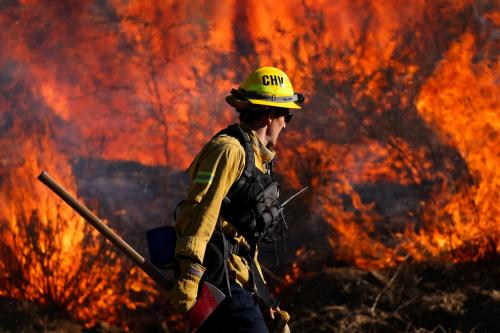On May 5th one of Darfur’s main rebel groups signed an agreement with the government of Sudan following African Union mediation efforts backed by the United States and European governments. But it is questionable whether the Abuja accord will protect the people of western Sudan from genocidal acts by their own government and the Arab militias (the Janjaweed) it supports. When asked whether the agreement would lead to a significant decline in violence, then-US Deputy Secretary of State Robert Zoellick, a key negotiator in the talks, responded that while the agreement is “an opportunity for peace,” Darfur “is going to remain a dangerous place.”1
Under the peace accord, a cease-fire will be followed by the disarmament of the Janjaweed (a process that will take months), the integration of most rebel forces into the Sudanese army and police, and the establishment of protective buffer zones around internally displaced persons (IDPs) camps and assistance corridors. In addition, there will be power and wealth sharing arrangements, including a fund to reconstruct and develop Darfur, a commission to help IDPs and refugees to return home and a compensation fund for victims of the conflict.
The Darfur insurgency began in 2003 when rebels attacked government outposts, in response to a history of grievances and neglect from the central government. The government’s response was the massacre of tens of thousands of African farmers, the rape of unknown numbers of women and girls and the torching of an estimated 2,000 villages. The government dealt with the three Darfur rebel tribes the same way it had dealt with earlier rebellions by black Africans in the South who complained of marginalization. Over the next few years, an estimated 450,000 black African men, women and children in Darfur died from violence, starvation and disease, with more than 75 percent of their villages and farms destroyed. More than 2 million became internally displaced while some 200,000 fled to Chad where they recently came under attack as the conflict spread over the border. At least 3.5 million Darfurians are dependent on international food aid. Darfur continues to be described as the world’s “worst humanitarian disaster.”2
Bringing this disaster under control and ensuring that the terms of the peace agreement are carried out is a challenge that will require continued international pressure and troop involvement. During 2004 and 2005, international pressure sometimes stemmed the violence and secured entry for humanitarian aid operations, which stopped a good deal of starvation and disease. But by the end of 2005, the situation deteriorated. The Janjaweed began to attack people inside the IDP camps and to burn down the remaining black African farming villages. Darfur’s rebel groups began to splinter and fight among themselves, and as their command structures disintegrated, they looted aid convoys and raided Arab nomad communities. Rebels from Chad became active on both sides of the border, and armed banditry and robbery became rampant, leading to attacks on African Union (AU) peacekeepers and humanitarian workers, undermining their operations and weakening the only protection and assistance IDPs and villagers had.
1Glenn Kessler, “Sudanese, Rebels Sign Peace Plan For Darfur, Washington Post, May 6, 2006.
2UN Regional Information Networks, April 5, 2006.



Commentary
No Quick Fix for Darfur
March 1, 2006